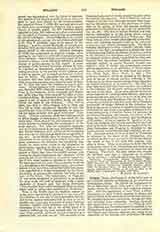

Collado, DIEGO, missionary, b. in the latter part of the sixteenth century at Miajadas, in the province of Estremadura, Spain. He entered the Dominican Order at Salamanca about 1600, and in 1619 went to Japan, where the Christians were suffering persecution. After the martyrdom of Luis Flores, a fellow-Dominican, in 1622, Collado repaired to Rome, and later to Spain, in the interests of the Oriental missions. He obtained important concessions, though not with-out incurring some animosity. Bearing Apostolic and royal letters, he returned to the Orient in 1635. The following year he endeavored to establish in the Philippines an independent convent devoted solely to the Chinese and Japanese missions, but, owing to the opposition of the Spanish civil authorities, his effort was unsuccessful. Recalled to Spain, he was ship-wrecked, in 1638, on his way to Manila. He could have saved himself, but he remained with the unfortunates among his fellow-voyagers, hearing their confessions and preparing them for death. The following are his more important writings: “Ars grammatica japonicie linguie” (Rome, 1631, 1632); “Dictionarium sive thesauri linguae japonicas compendium” (Rome, 1632); “Modus confitendi et examinandi paenitentem japonensem formula suamet lingua japonica” (Rome, 1631, 1632); “Formula protestandm fidei” (Rome); “Historia eclesiastica de los sucesos de la cristianidad del Japan desde el ano de MDCII, que entrb en el la orden de predicadores hasta el de MDCXXI por el P. Hiacintho Orfanel, anadida hasta el fin del ano MDCXXII por el Padre Fray Diego Collado” (Madrid, 1632, 1633); “Dictionarium linguae sinensis cum explicatione latina et hispanica charactere sinensi et latino” (Rome, 1632).
JOHN R. VOLZ

